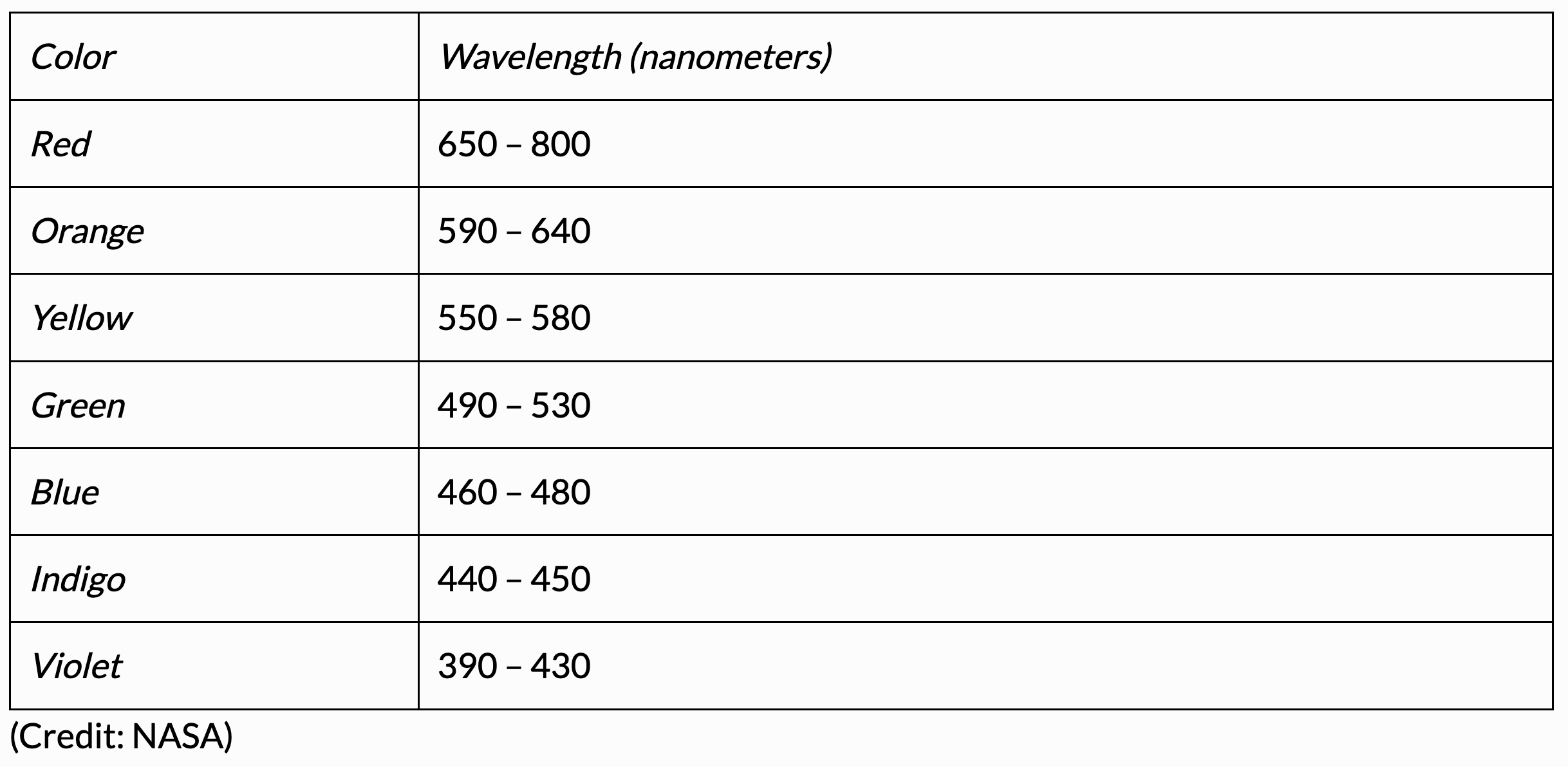How does light transform into color? How are different colors formed? Color is how our brains perceive and interpret visible light. In the Merriam Webster dictionary, color is defined as “the property possessed by an object of producing different sensations on the eye as a result of the way the object reflects or emits light.” Here is an overview of the color spectrum and the color wheel; they help us measure and catalogue our perception of visible light.
The Color Spectrum
Electromagnetic radiation is energy that travels in waves throughout the universe. The electromagnetic spectrum is a measurement and catalogue of different kinds of electromagnetic radiation in a wide spectrum that spans from radio waves to gamma rays. Visible light, including the color spectrum, occupies only a tiny sliver of the broad electromagnetic spectrum. Humans do not have the natural ability to see outside the spectrum of visible light, but we developed technology that can perceive wavelengths that are infrared (“beneath red”) and ultraviolet (“beyond violet”).
Designated for scientific use, the color spectrum is a scale that shows which wavelengths of electromagnetic radiation are visible to us (390 and 800 nanometers). The color spectrum was created by Sir Isaac Newton, the first person to categorize visible light into seven separate bands of wavelengths. However, there is speculation that he split purple into indigo and violet just so that he could match the number of notes in a major musical scale.

The Color Wheel Goes Round and Round
Designated for color theory and artistic use, the color wheel is a chart representing the relationships between colors and the “temperature” of each color. Most color wheels have 12 distinct colors but some wheels can have as many as 24! Within the wheel, colors are grouped in three categories: primary, secondary, and tertiary.
Primary Colors
In art and painting, the primary colors are yellow, red, and blue. Pure yellow, red, or blue paint contains only one unmixed pigment, therefore none can be created by mixing other colors. In that sense, primary colors are the parents of all colors and hues. You can mix primary colors with each other to create other colors: secondary and tertiary colors.
Secondary Colors
Secondary colors—orange, green, and purple—are created by blending two of the primary colors together. Orange is created by mixing red and yellow together, green by mixing yellow and blue, purple by mixing blue and red. However, it doesn’t always work that way—if you mix ultramarine blue and cadmium red, it will result in an ugly shade of purple-black instead of a vibrant purple because both cadmium red and ultramarine blue contain minute amounts of yellow pigment.
Tertiary Colors
Tertiary colors result from a primary color combined with one of its neighboring secondary colors. For instance, red and orange would mix to create red-orange and blue and purple would mix to create blue-purple.
It’s Black and White (and Gray)
You may have noticed that black, gray, and white don’t appear on the color spectrum or the color wheel. That is because they are not “color” in the sense that other colors are. They are achromatic colors—colors without hues. Black is the darkest color, the outcome of the absence or complete absorption of all visible light. White is the lightest color, the result of reflection and scattering of all visible light. Gray is not a hue, but rather an intermediate color between black and white. These “colors” have their own scale called the grayscale, from the blackest black to the whitest white.
Where is Charlie Brown?
Brown also doesn’t appear on the color spectrum or the color wheel because it is a composite color. To achieve brown paint, you need to mix opposites on the color wheel—for instance, combining red and green or blue and orange would create brown.
Color Schemes
Color schemes are combinations of two or more colors chosen for aesthetic purposes. The ultimate rule of color schemes is that opposites do attract! Most colors work extremely well with their opposite on the color wheel—for instance, purple and yellow (specifically golden yellow) is stately and symbolizes wealth and luxury while a red-green scheme evokes a Yuletide cheer. Blue-orange is bold, bright, energetic, and adventurous—perfect for catching an eye.
With the color wheel, you can build your color scheme around your preferences and what appeals to you.
If color theory and selection is confusing, we have an in-house artist on our team of professional painters here in Lancaster County to assist you in choosing your paint color. Call Ville Painters at (717) 396-1176 for a consultation session to determine what color fits your needs!
-(11).png)


